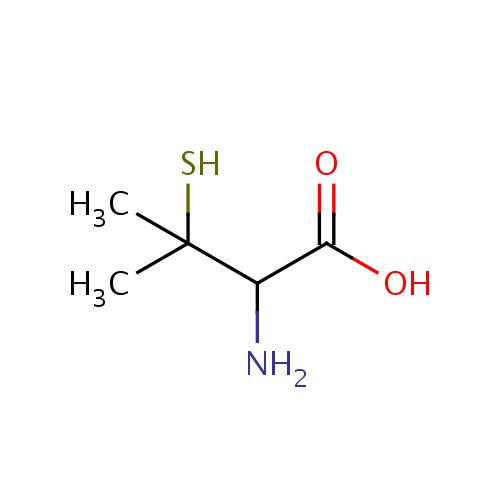| Indication | For treatment of Wilson's disease, cystinuria and active rheumatoid arthritis. |
| Pharmacodynamics | Penicillamine is a chelating agent used in the treatment of Wilson's disease. It is also used to reduce cystine excretion in cystinuria and to treat patients with severe, active rheumatoid arthritis unresponsive to conventional therapy. Penicillamine is used as a form of immunosuppression to treat rheumatoid arthritis. It works by reducing numbers of T-lymphocytes, inhibiting macrophage function, decreasing IL-1, decreasing rheumatoid factor, and preventing collagen from cross-linking. Its use in Wilson's disease, a rare genetic disorder of copper metabolism, relies on its binding to accumulated copper and elimination through urine. |
| Mechanism of action | Penicillamine is a chelating agent recommended for the removal of excess copper in patients with Wilson's disease. From in vitro studies which indicate that one atom of copper combines with two molecules of penicillamine. Penicillamine also reduces excess cystine excretion in cystinuria. This is done, at least in part, by disulfide interchange between penicillamine and cystine, resulting in formation of penicillamine-cysteine disulfide, a substance that is much more soluble than cystine and is excreted readily. Penicillamine interferes with the formation of cross-links between tropocollagen molecules and cleaves them when newly formed. The mechanism of action of penicillamine in rheumatoid arthritis is unknown although it appears to suppress disease activity. Unlike cytotoxic immunosuppressants, penicillamine markedly lowers IgM rheumatoid factor but produces no significant depression in absolute levels of serum immunoglobulins. Also unlike cytotoxic immunosuppressants which act on both, penicillamine in vitro depresses T-cell activity but not B-cell activity. |
| Absorption | rapidly but incompletely |
| Volume of distribution | Not Available |
| Protein binding | >80% (bound to plasma proteins) |
| Metabolism | Hepatic |
| Route of elimination | Excretion is mainly renal, mainly as disulfides. |
| Half life | 1 hour |
| Clearance | Not Available |
| Toxicity | Not Available |
